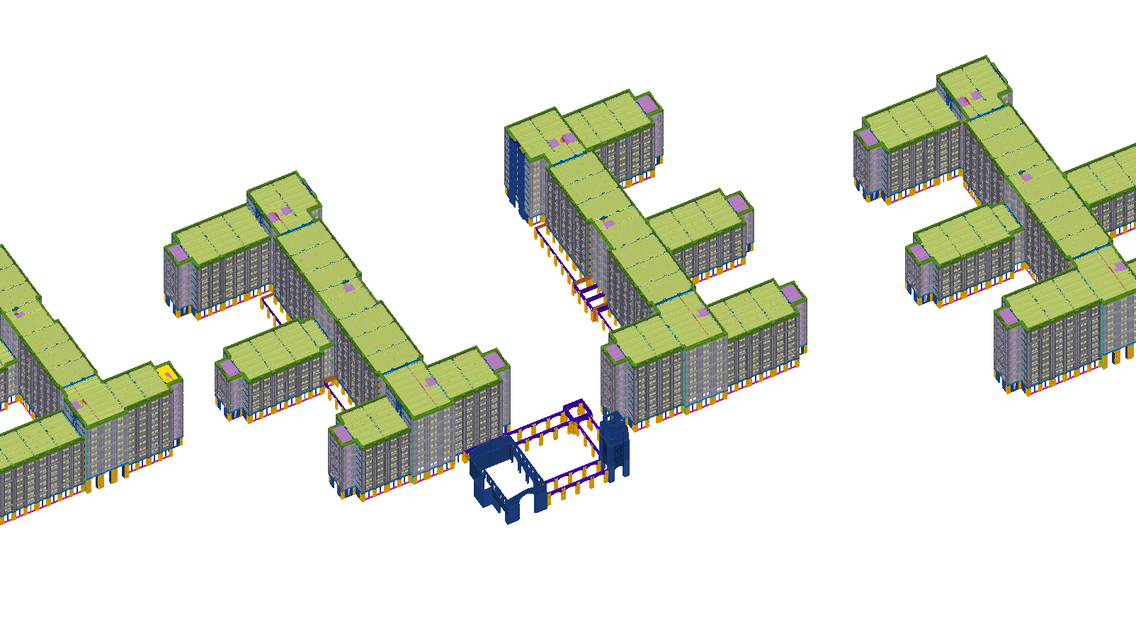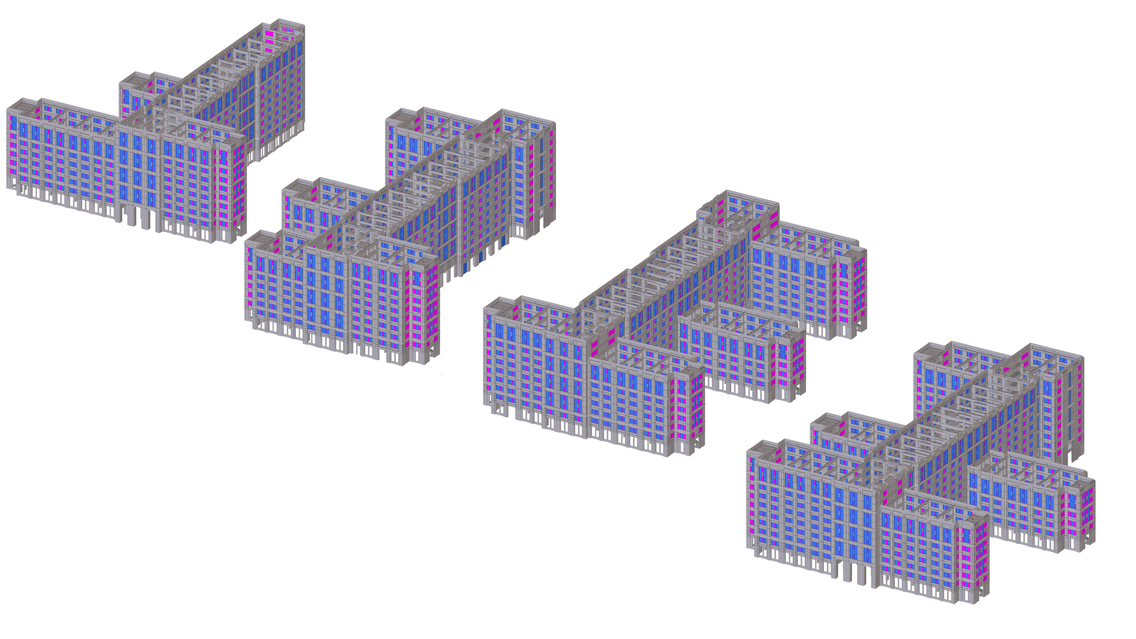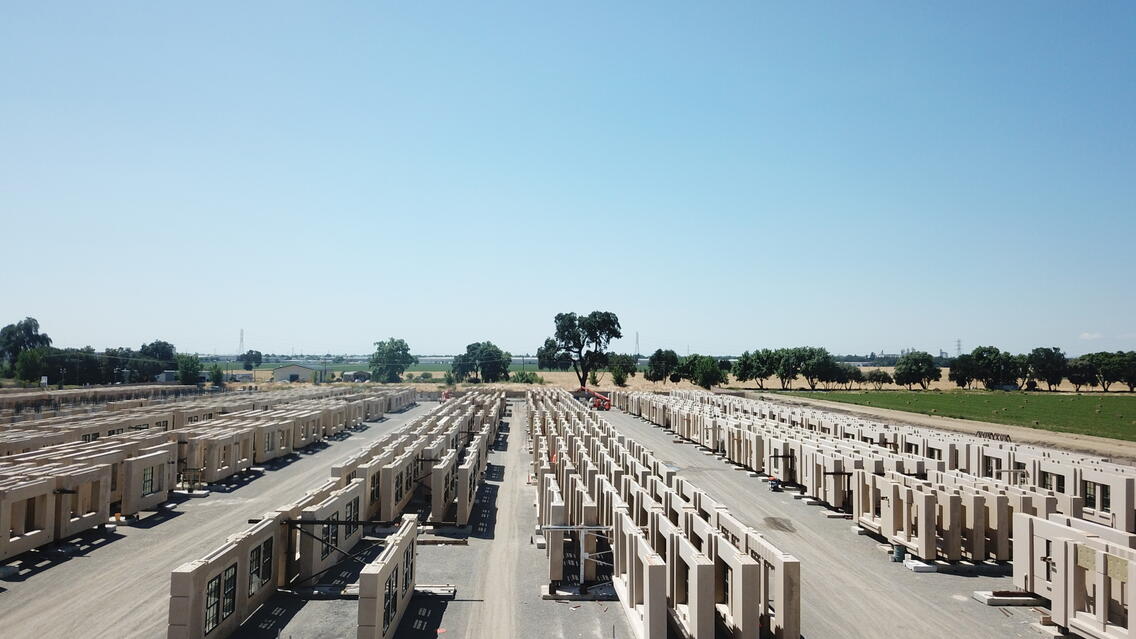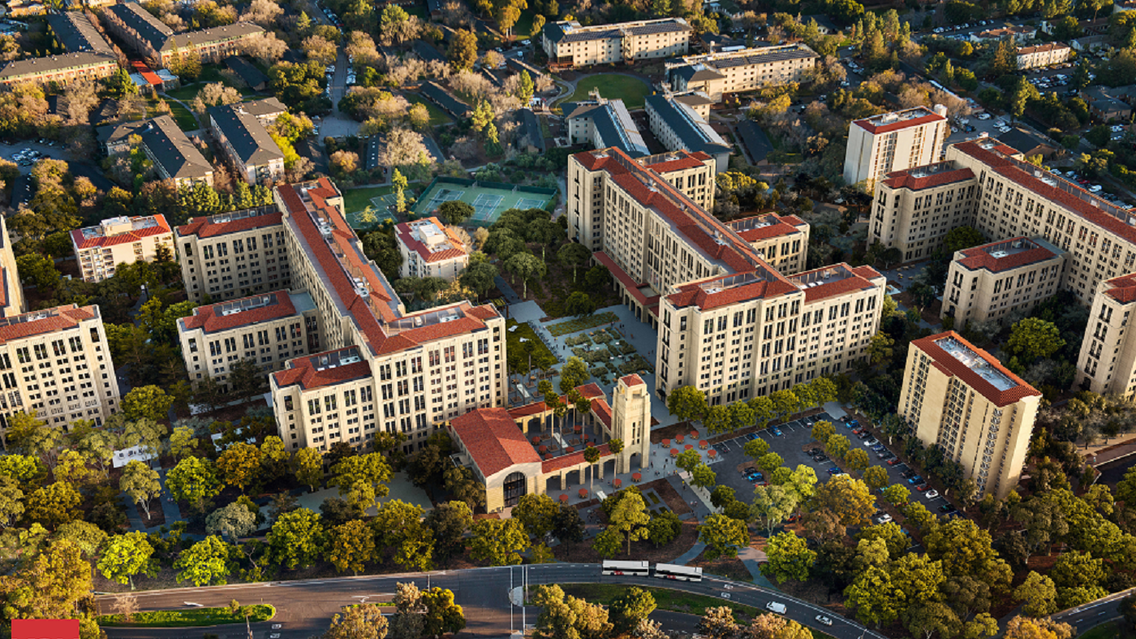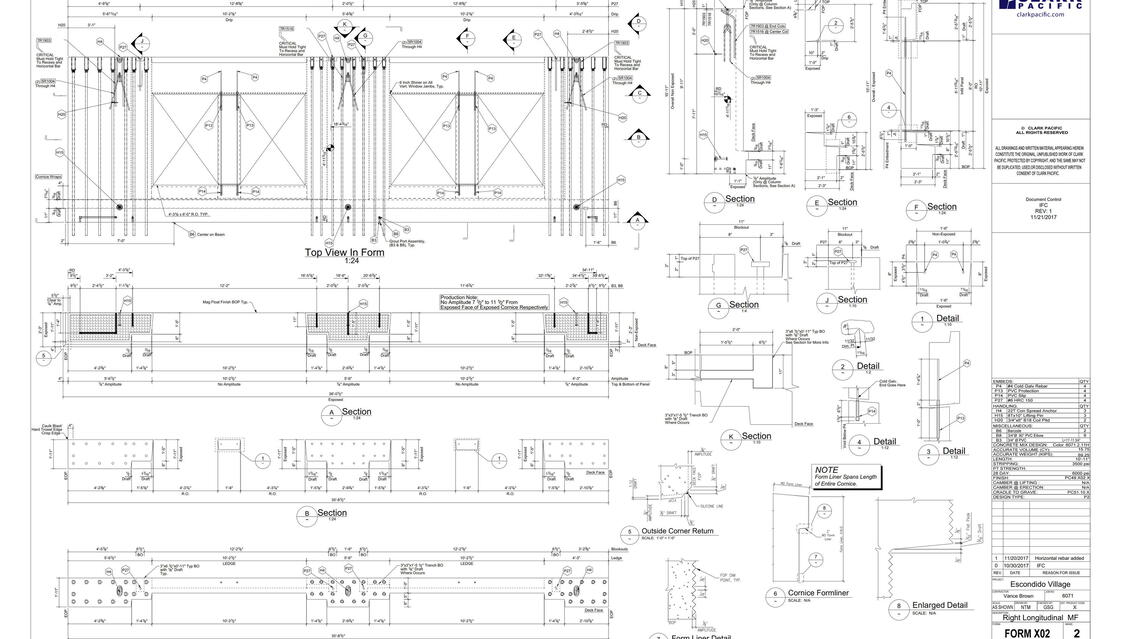Collection of four residence halls
Stanford University is a private research institution with over 16,000 students including 9,000 post graduates. To help meet its housing needs, Stanford decided to replace several of its current low-rise wood frame graduate apartments with high quality mid- to high-rise buildings.
The project, Escondido Village Graduate Residences, is a collection of four residence halls of Type I construction, that range from 10, 8 and 6 storeys providing 2,434 beds. Today, Stanford only houses about 55 percent of its 9,000 graduate students in on-campus housing. When complete, Stanford estimates the project will increase its on-campus graduate housing rate to approximately 75 percent.
Project at a glance
- 4 Buildings
- 2434 Beds
- 1,835,000 SF Residences
- 1,025,000 SF Exterior Cladding
- Resilience: Designed to Higher Class II Level than prescribed by the Code
Prefabricated Building System Solution
Clark Pacific’s prefabricated building systems approached, which allowed Stanford to take advantage of the benefits of off-site construction and meet their schedule and budget objectives and significantly reduce construction impacts to campus in the process. In addition, Stanford and the design team wanted the new buildings to blend in with the existing campus architecture.
The following prefabricated building solutions addressed these project objectives:
• Primary structure comprised of beams, columns, walls, and slabs
• Architecturally finished structural elements
• Pre-installed glazing system
Integrated Structure and Cladding
Rather than a typical secondary exterior cladding system, Clark Pacific’s solution integrates the structure with the exterior cladding integrating the desired aesthetic and meeting the enhanced resiliency demands for the project.
Glazing System Installed Off-site
Prefabricated systems for the project went beyond prefabricated concrete, as Clark Pacific pre-installed glazing elements in the exterior panels in the factory, further reducing impacts of construction activity on campus.
By integrating the systems and glazing system installed off-site, the project will benefit by removing a total of over 65,000 worker days from the jobsite, resulting in fewer campus vehicle trips, on-campus parking, idling trucks, and overall campus congestion.
The Design Process
For the design team to effectively collaborate on a project of this size and complexity, the team developed protocols for sharing information so that each member could understand other members’ information needs. Current standard workflows do not address DfMA (Design for Manufacturing and Assembly) principles. These protocols enabled team members to share critical information needed in the DfMA process while protecting each discipline’s individual data set.
The workflow process
1. Architect passed 3D Sketchup design model to fabricator and structural engineer
• Structural engineer converts architect’s 3D Sketchup model elements into Revit
• Fabricator converts architect’s 3D Sketchup model elements into Tekla
2. Fabricator passes Tekla model via Revit export to structural engineer
3. Fabricator passes Tekla model via Sketchup export to architect
4. Architect and structural engineer incorporate fabricator’s changes… and process repeats
The project is expected to be completed in the 2020/2021 timeframe
